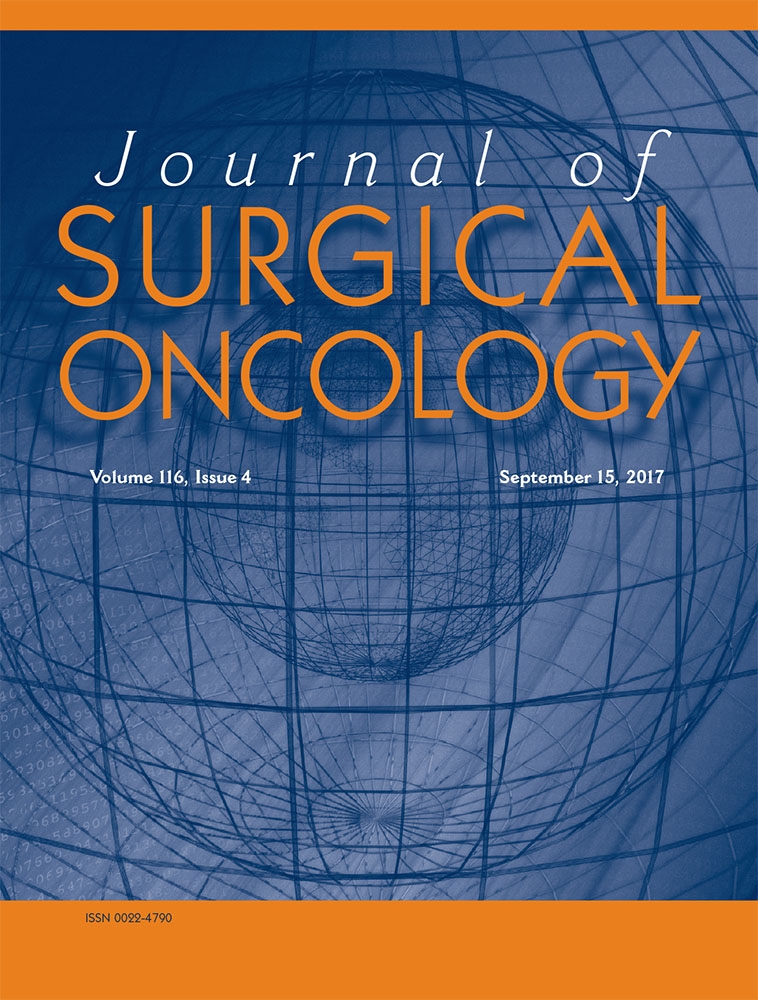The prognostic utility of the “Tumor Burden Score” based on preoperative radiographic features of colorectal liver metastases
Abstract
Background
Recently, a tumor-burden “metro ticket” score (TBS) based on final pathology was proposed to predict outcome following resection of colorectal liver metastasis (CRLM). We sought to validate the TBS prognostic tool using preoperative radiologic cross-sectional imaging.
Methods
Imaging TBS was defined on a Cartesian plane that incorporated both maximum tumor size (x-axis) and lesion number (y-axis) assessed by pre-operative imaging. The discriminatory power (area under the curve [AUC]) and goodness-of-fit (Harrel's C statistic and Somer's D statistics) of the imaging TBS model was assessed.
Results
Imaging and pathologic TBS correlated strongly (r = 0.76, P < 0.01). Among patients treated with neoadjuvant therapy, the correlation was strongest among patients with progressive disease/stable disease (PD/SD) (r = 0.81). Discriminatory power of the imaging-based versus pathology-based TBS models were comparable (AUC 0.64 vs. 0.67, respectively P > 0.05). An incremental worsening of long-term survival was noted as the imaging TBS increased (5-year OS: Zone1, Zone2, and Zone3—61.3%, 46.7%, and 38.5%, respectively; P = 0.03). The imaging-based TBS model outperformed the “classic” pathology-based Fong score (Harrel's C-index: imaging TBS-0.56 vs. Fong score-0.53; Somers'D-index: imaging TBS-012 vs. Fong score-0.06).
Conclusions
Imaging-based TBS was superior to traditional tumor size and number and was comparable to pathology-based TBS. Imaging-based TBS may have the potential to facilitate improved preoperative risk stratification of patients with CRLM.




